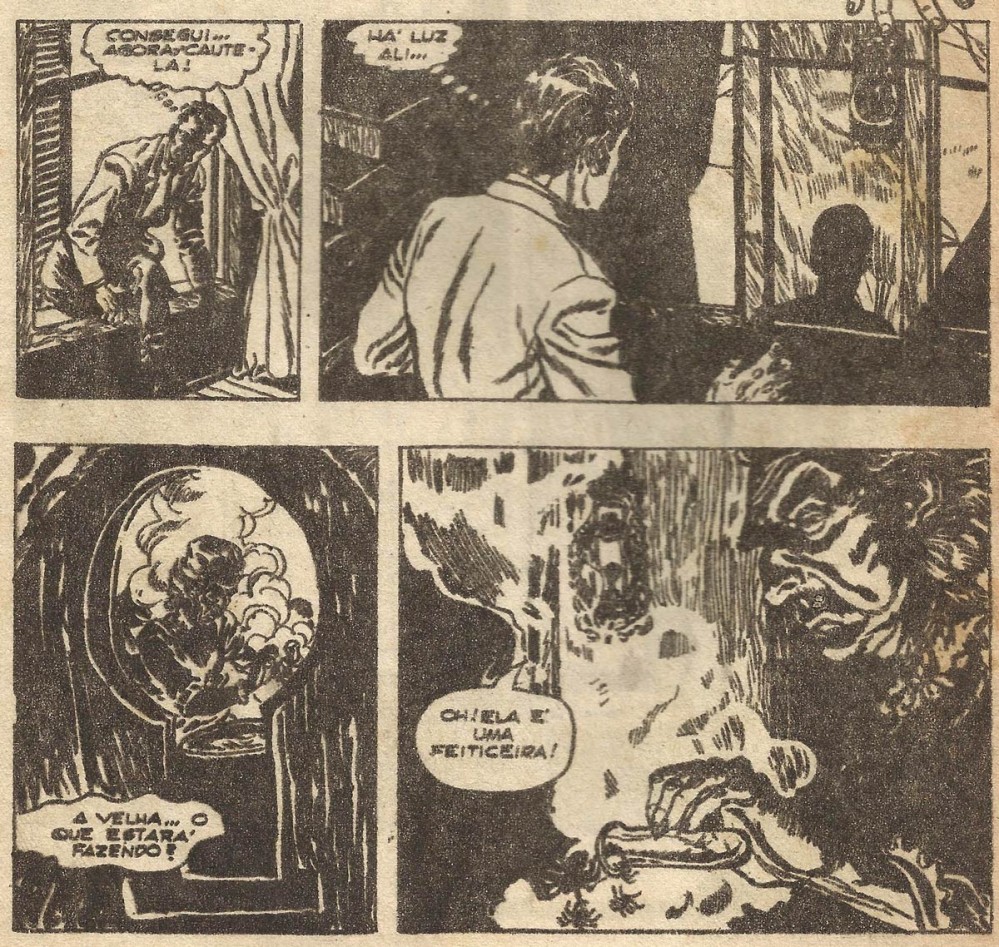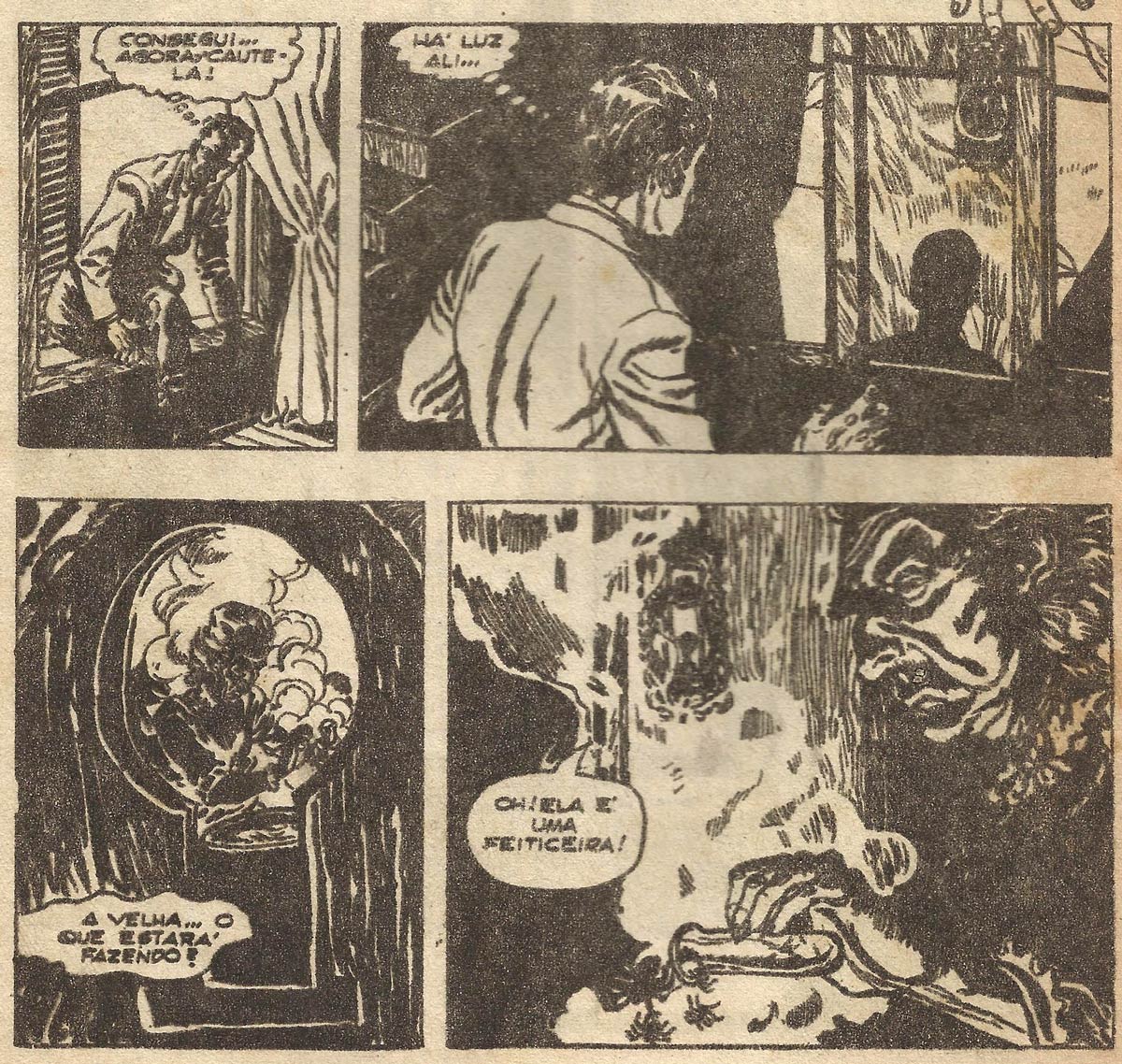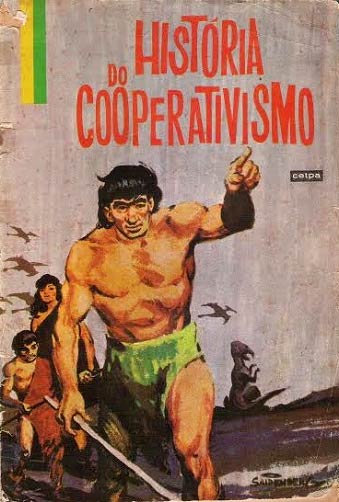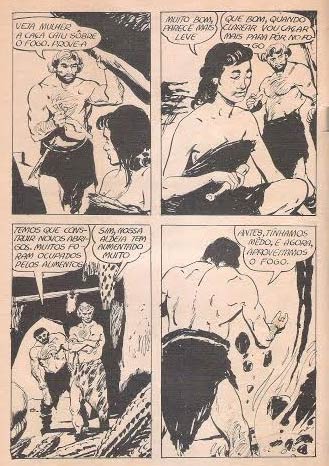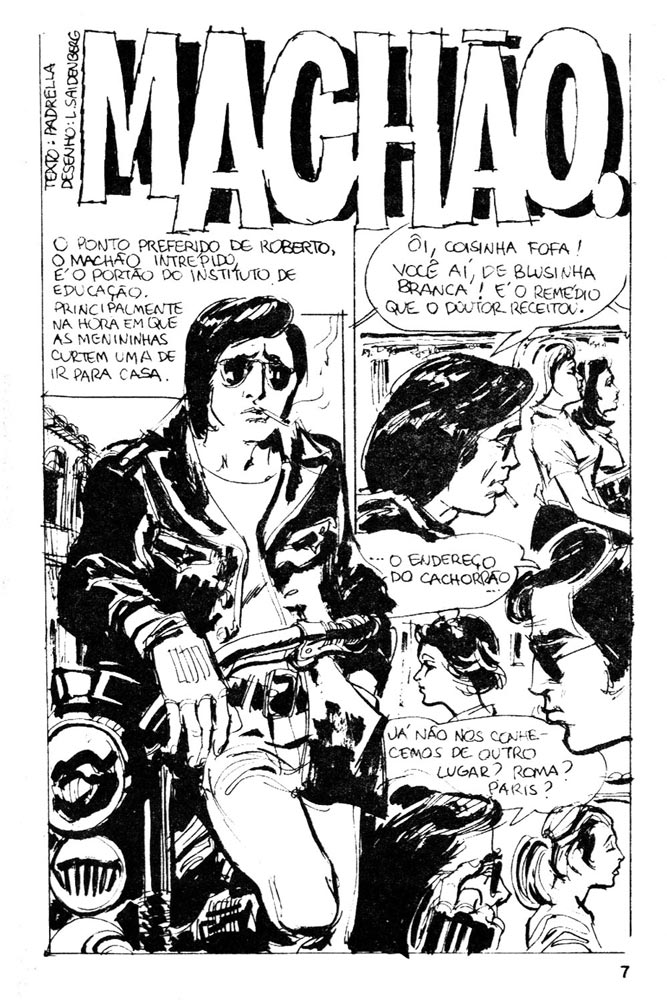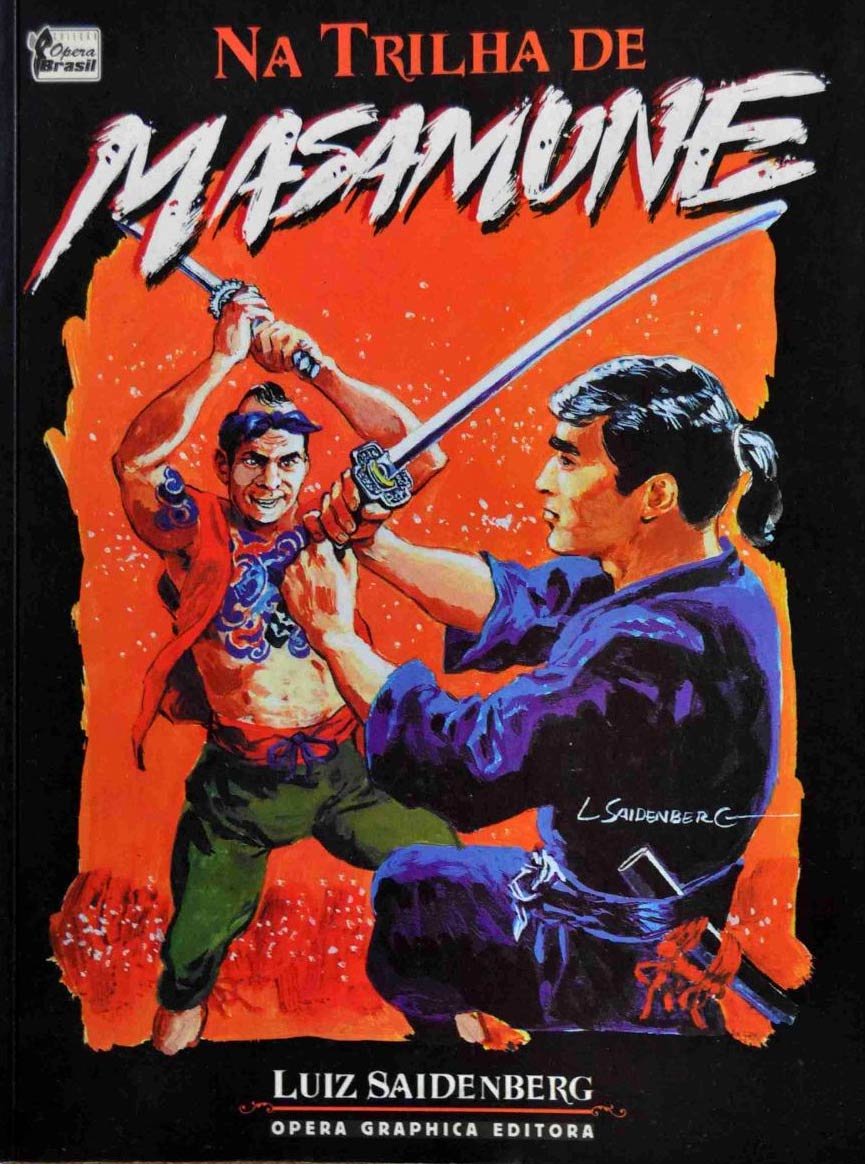'Ángela', a horror story by the Saidenberg brothers for Histórias Macabras #14.
Luiz Saidenberg is a Brazilian advertising artist, who worked in the comic industry during the early 1960s, drawing horror comics for Editora Outubro and propaganda comics for CETPA. Working extensively as a storyboard artist since then, he returned to comics in the 2000s with the publication of two samurai graphic novels, 'Na Trilha de Masamune' (2003) and 'No Rastro de Masamune' (2009).
Early life and career
Luiz Simões Saidenberg was born in 1939 in the city of Piracicaba. At age 17, he began working as an artist in São Paulo, drawing banners, cartoons, and comic books. In 1959, he joined Editora Outubro, the publishing house of Miguel Penteado and Jayme Cortez. There, he worked on horror stories for comic books like 'Clássicos de Terror' and 'Histórias Macabras'. Several of the stories he drew were written by his brother Ivan Saidenberg (1940-2009), who began his career around the same time. The horror comics were also his first collaborations with his friend and fellow artist Júlio Shimamoto.
História do Cooperativismo
Along with several of his colleagues, Luiz Saidenberg was one of the promoters of the nationalization of comics in his country in order to protect the domestic comic industry from an overkill of American import. He associated himself with ADESP, a collective from São Paulo with Mauricio De Sousa as chairman. Like the similar group ADAGER from Guanabara and Rio de Janeiro, the members tried to get political support for their cause. With the aid of Leonel Brizola, the leftist governor of Rio Grande do Sul, the publishing imprint CETPA (Cooperativa Editora de Trabalhos de Porto Alegre) was founded in Porto Alegre in February 1962. Saidenberg joined the team, which also consisted of Flávio Colin, Renato Canini, Getúlio Delphim, Júlio Shimamoto, João Mottini and Zé Geraldo, who was the head of the operation. The group produced several comics aimed at the education and support of Brazilian culture and history. Luiz Saidenberg was responsible for a comic book about the cooperative movement of Brazil, called 'História do Cooperativismo'. CETPA was dissolved after the military coup of 1964, and its members were considered communists by the new regime and unable to continue their careers in the comic book industry. Saidenberg and Shimamoto had already left the group by January 1963, because of conflicts with chairman Geraldo.
'Machão' (Quadrinhos Eróticos #67 by Grafipar).
Post-CETPA
During the 1960s, Luiz Saidenberg moved on to become a productive storyboard artist for the McCann Erickson advertising agency. He worked through the Alcântara Machado Propaganda studio (Almap), along with fellow artists Lyrio Aragão Dias, Waldyr Igayara de Souza and Julio Shimamoto. In 1979, Shimamoto invited him to return to comic books. During a period of one year, he worked for Ediciones Grafipar from Curitiba, contributing to the erotic comic books ('Quadrinhos Eróticos', 'Péricla').
Masamune
In 2002, Luiz Saidenberg's importance for the national comic industry was recognized with the Prêmio Angelo Agostini for "Master of National Comics". Winning the award encouraged him to produce his first graphic novel, 'Na Trilha de Masamune', which was published by Opera Graphica in the following year. The plot revolves around a mystical sword by the legendary Japanese swordsmith Masamune (1264-1343), which gives the honor and goodness of its creator to the person who wields it. The follow-up to this samurai saga appeared under the title 'No Rastro de Masamune' (Marca de Fantasia, 2009).
Later work
In 2005, Saidenberg started to contribute chronicles to the website 'São Paulo Minha Cidade', and he illustrated the books 'Robin Hood - O Justiceiro da Floresta' and 'Ben-Hur" - O Guerreiro Libertador' in the collection of children's literature classics for Editora Minuano. Both books were written by Gian Danton. In 2019, the Ink&Blood Comics imprint of Editora Cultura & Quadrinhos revived the classic Brazilian horror magazine Calafrio, with Luiz Saidenberg as one of the veteran horror artists contributing.
Family connections
Luiz Saidenberg's brother Ivan was one of the leading scriptwriters of Brazilian Disney comics, in which capacity he was the creator of the superhero identities of Fethry Duck ('Morcego Vermelho') and Zé Carioca ('Morcego Verde'), as well as the cowboy and Tarzan versions of Fethry ('Pena Kid' and 'Pena das Selvas', respectively).


